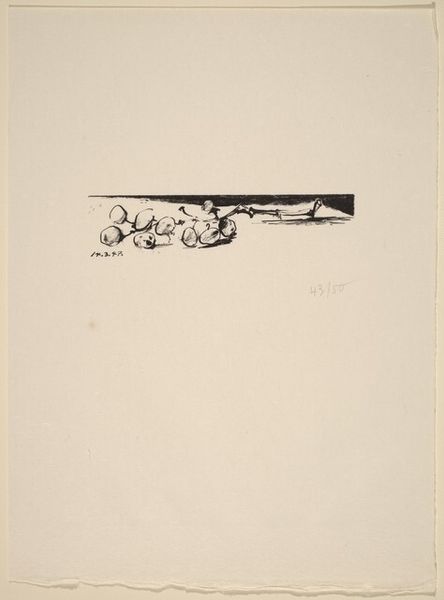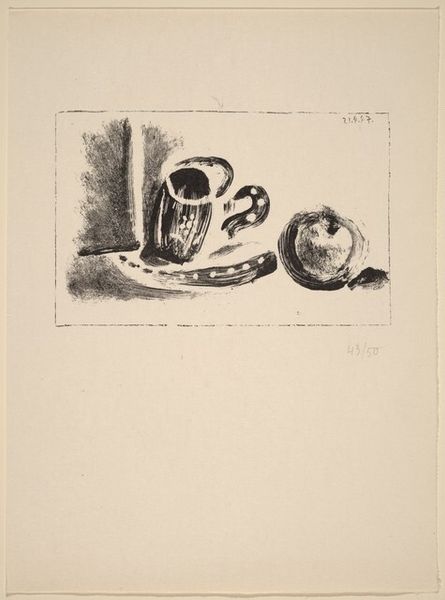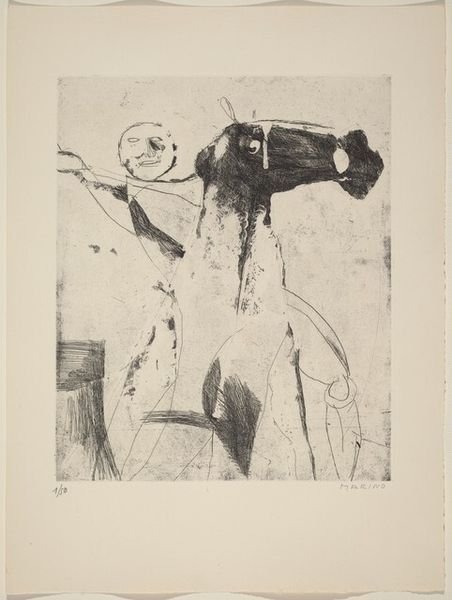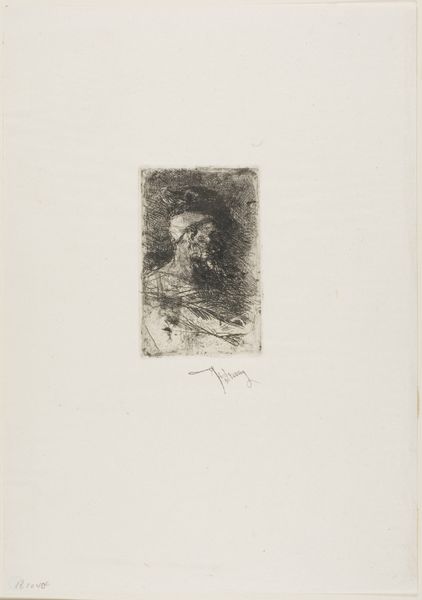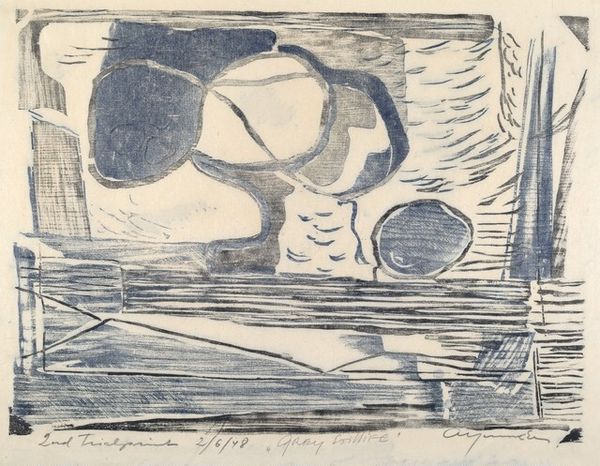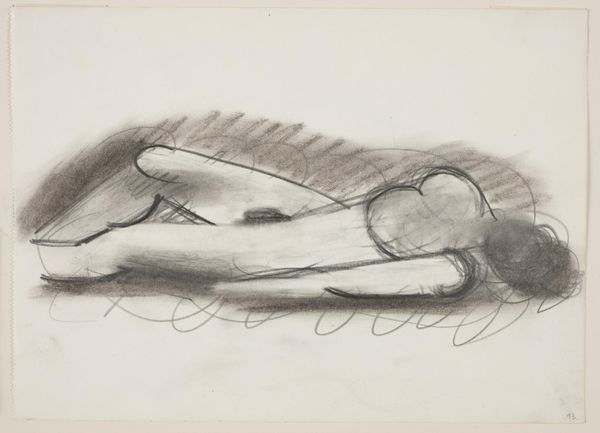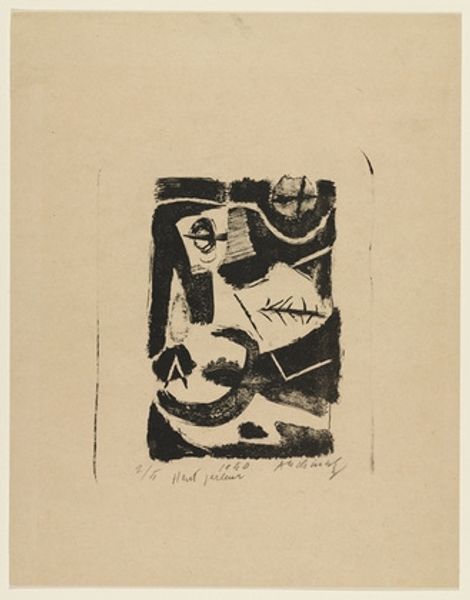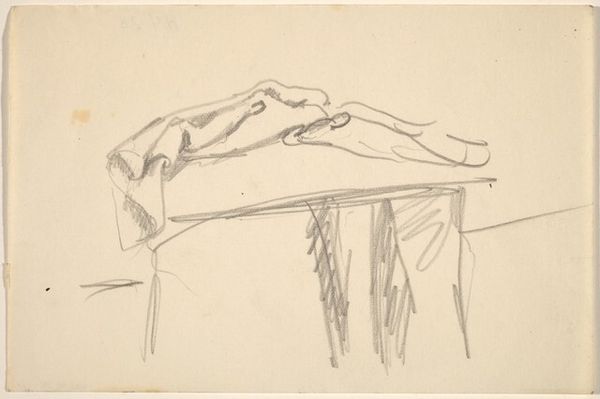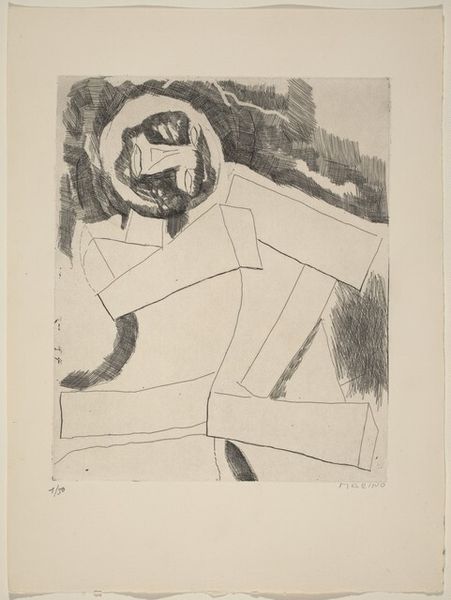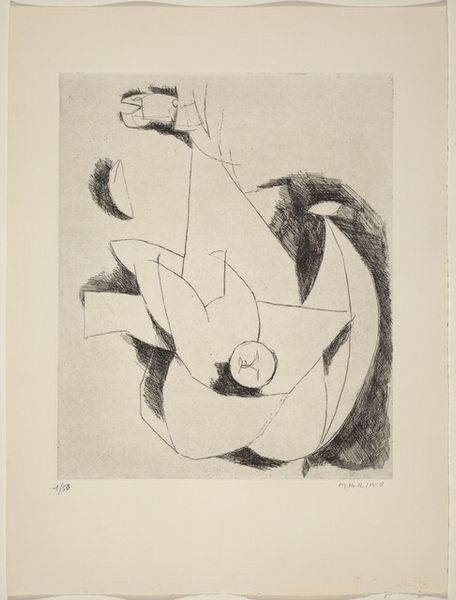
print, etching
#
cubism
#
ink drawing
# print
#
etching
#
ink drawing experimentation
#
abstraction
Copyright: National Gallery of Art: CC0 1.0
Curator: Immediately striking; the boldness of line and the stark contrast create a certain drama despite the quotidian subject. Editor: We're looking at "Le couteau et la pomme" – "Knife and Apple" – an etching executed by Pablo Picasso in 1947. It’s a masterful display of cubist abstraction using only ink. Curator: Abstraction indeed! The dissection and reassembly of the still life elements offer multiple perspectives simultaneously. The knife, seemingly flimsy, juxtaposed with the plump forms of the apples is quite compelling. How are we to read this arrangement? Editor: Well, 1947 was a pivotal moment. Post-war anxieties were palpable, and Picasso, though grappling with personal demons, engaged deeply with the role of the artist in a world healing—or failing to heal—from conflict. Consider the iconography of the knife: it could represent violence, certainly, but also the possibility of change, or even artistic intervention, if we understand his artistic role as a positive thing. Curator: The monochromatic palette emphasizes the essential forms. Observe how Picasso uses hatching and cross-hatching to give volume and depth. The table is barely indicated, creating an ambiguity in the spatial arrangement; there is only an abstract field within which these things appear. The shadow beneath these objects only grounds it tentatively. Editor: I agree that the setting, reduced as it is, seems almost to float, evoking the fractured realities of the era and referencing his other cubist works while dealing with new forms. While traditional still life suggested domestic stability and material wealth, Picasso perhaps aims to dismantle those bourgeois connotations and reflect something starker. It feels a challenge to order. Curator: I'm fascinated by the pure design principles at work. Regardless of historical context, the dynamism between line and form holds a visual power. It’s interesting to consider its function within cubism's wider preoccupation with perspective. Editor: Indeed. The historical weight definitely informs our understanding. A simple subject elevated through masterful abstraction; the piece shows Picasso attempting to cut into the essence of not only the objects represented but also the times. Curator: It will be worthwhile to spend a bit of time here appreciating the tensions within the print itself. Editor: And also contemplating its reflections on history, and on the social functions and pressures on art during Picasso's long career.
Comments
No comments
Be the first to comment and join the conversation on the ultimate creative platform.
